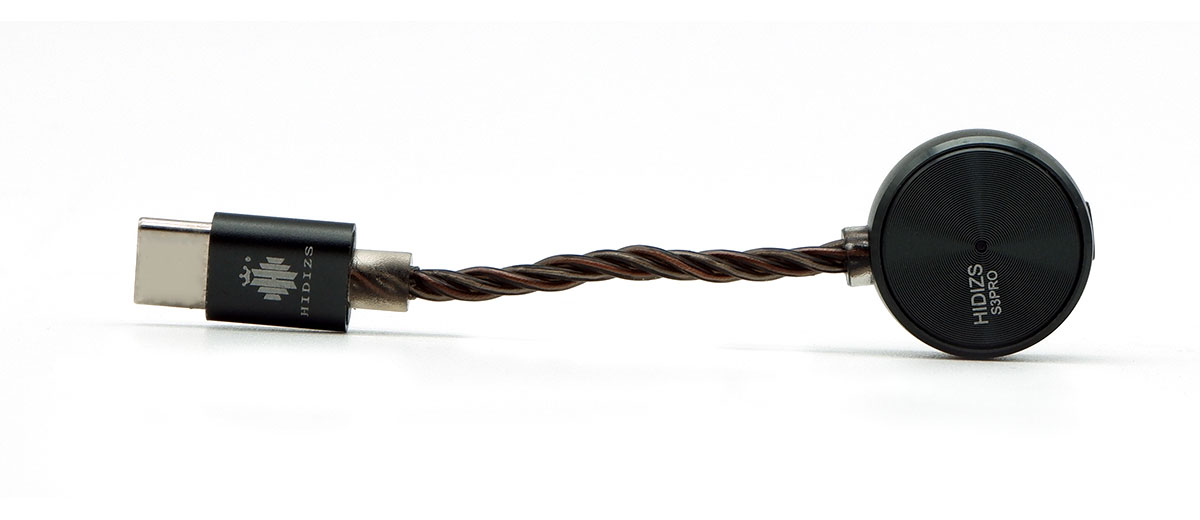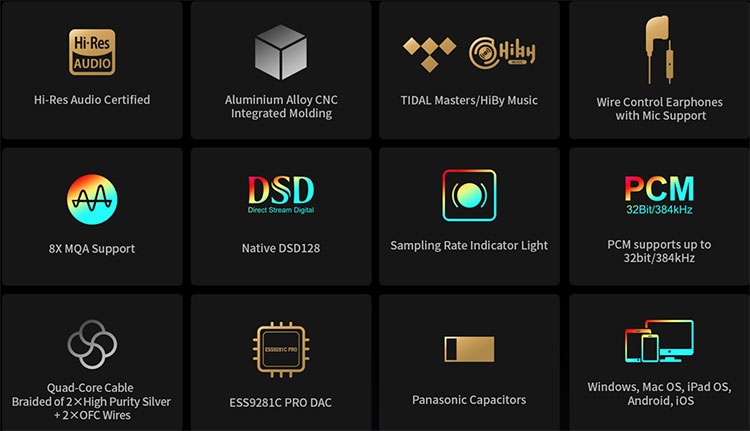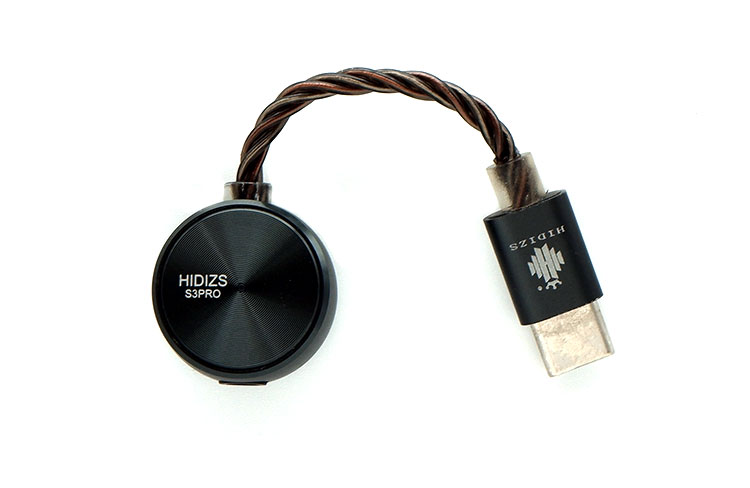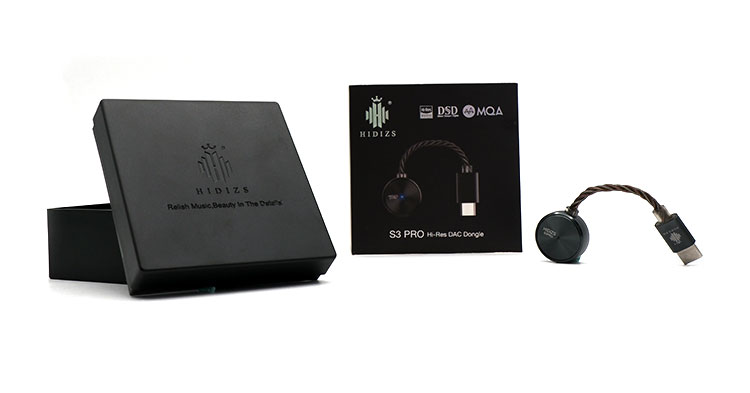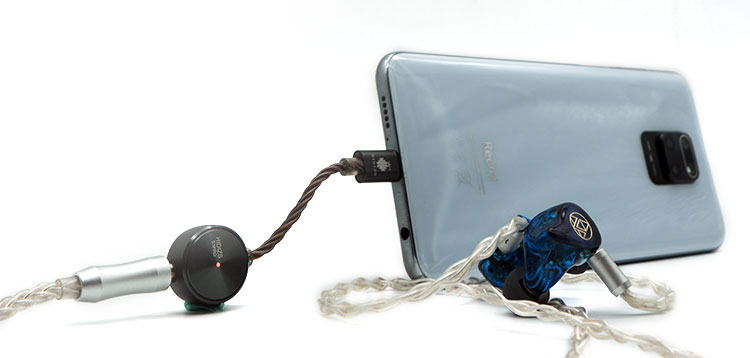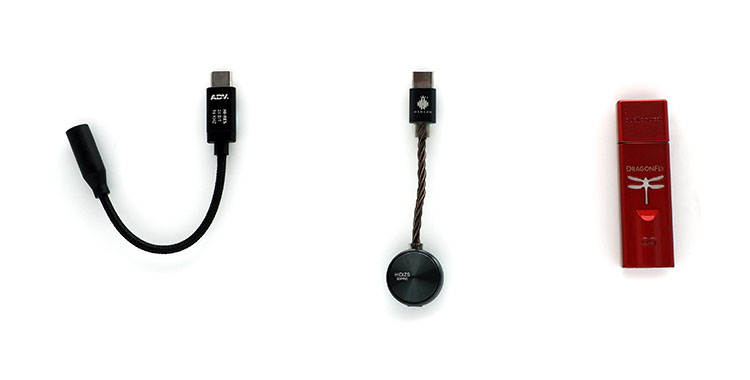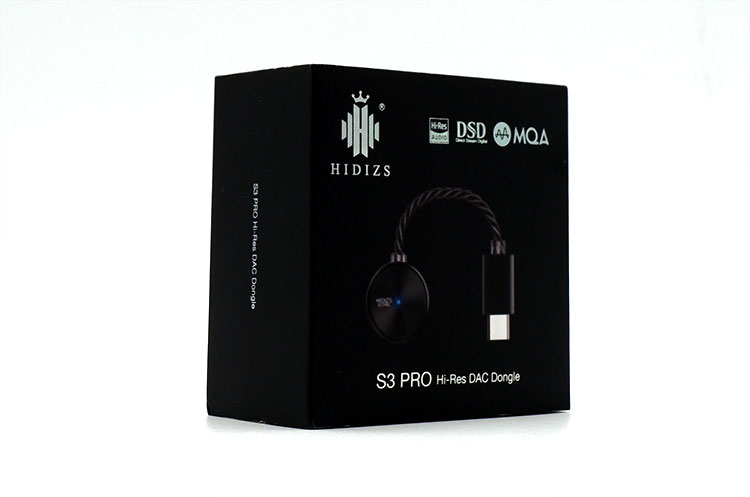The Hidizs S3 Pro is a portable DAC/Amp dongle featuring 8X MQA, Apple Music support, and up to 55mW of output power. It is priced at $69 SRP.
Disclaimer: The Hidizs S3 Pro sent to us is a sample in exchange for our honest opinion. We thank the team at Hidizs for giving us this opportunity.
To read more about Hidizs products we reviewed on Headfonics click here.
Note, this review follows our new scoring guidelines for 2021 which you can read up on here.
The S3 Pro will also be offered on Kickstarter on July 8th, 2021 with early bird discounts. You can access that page here.
Hidizs was established in 2009 by its founder, Tamson together with 40 audio-obsessed professionals. It was with the mindset that music should be heard as it was intended to be that they established Hidizs. And it was with this mindset that the Hidizs R&D team came out with their first DAP, the AP100.
Through the years, Hidizs has been churning out affordable, high-quality portable audio solutions with their DAPs, IEMs, Bluetooth receivers, and DACs. Today, we are taking a closer look at Hidizs’ latest compact dongle DAC, the S3 Pro.
Tech Highlights
Despite its size, the S3 Pro has been packed with features that ensure a high-quality experience. The attached cable on the S3 Pro is made of a quad-core cable composed of 2 strands of silver cable, and 2 strands of OFC copper cables for the highest integrity signal transmission.
Inside, the S3 Pro is equipped with an ES9281C Pro DAC, which can decode up to PCM 32bit/384kHz, and DSD 128. Aside from the standard formats, the S3 Pro is also capable of MQA decoding, and it does it at a maximum of 8x unfold.
Aside from the decoding capabilities, the S3 Pro also boasts of a 130dB SNR, and a 110dB THD, allowing it to be virtually silent in most applications.
Design
Given the purpose of a dongle DAC, it’s really an asset that the S3 Pro is so tiny. When I first received it, I was even wondering if the 3.5mm port could fit the whole plug. The diameter of the DAC is just a few mm larger than a standard 3.5mm TRS plug.
While the size of the S3 Pro is minuscule, the components used to build it ensure that it remains relatively robust despite the size. The USB C plug is encased in a metal sheath that ensures that it won’t be crushed or bent easily.
The round part of the DAC, which measures just 0.79” in diameter, is made of an aluminum alloy that was CNC milled to optimize every little bit of space for the DAC and amp circuitry inside.
Weighing in at only 6g, the S3 Pro will be easy to carry around. While the entire DAC is contained inside a puck that’s just slightly larger than a standard 3.5mm female connector, and the puck is connected to a USB connector via a short 90mm cable.
These dimensions make the S3 Pro just slightly heavier and take but a bit more space than a few coins, so tucking it away in your everyday carry audio pouch is going to be a convenient prospect.
Sample Rate Indicator
On top of the DAC, there is a small hole where the LED will show the current sample rate of the DAC. In my testing, most red book CD-quality files will show a red LED, while higher quality files that have a sample rate from 88kHz upwards will show the blue light. A pink LED on the other hand indicates that the DAC is decoding an MQA file.
The sample rate indicator on the S3 Pro is simple with just 3 colors that indicate a wide range of sample rates. But sometimes it’s better that way since it’s easier to remember.
Packaging & Accessories
When the S3 Pro arrived with me, I was surprised at the size of the box, it is tiny. There is a sleeve on the outside of the box, and the box itself is a hard plastic box with foam inserts that keep the DAC safe while it’s in transport.
Inside the box, there’s some bubble wrap, and then there’s the S3 Pro sitting inside the box. It really can’t get any simpler than this. In the retail package, the S3 Pro is supposed to contain a USB A to USB C converter, as well as a manual, unfortunately, they were not included in the package that arrived with us.
Sound Impressions
Bass
When paired with a more neutral IEM, the S3 Pro shows what it’s all about. Starting with the bass, it reaches quite low and remains controlled right down to the sub-bass regions.
Going into the mid-bass, there is an apparent warmth to the mid-bass region. The attack and decay of each drum hit is not particularly quick, but acceptable. This makes each note on a bass guitar very flowy while being allowed to linger just a bit longer.
Mids
Going into the midrange, the vocal range continues the slightly warmer bass region of the S3 Pro. The vocal range has a slight sweetness in the execution allowing classical tenors like Josh Groban or Andrea Bocelli’s richer vocal presentation to shine through.
The instrument timbre also keeps that slightly warmer tonal balance, making the tinkling of piano keys sound a bit subdued up top.
Treble
Due to the warmer nature of the S3 Pro, there is an obvious downshift in the treble range. While the treble can shine through when there isn’t much else playing, there is an obvious warmer tilt in the tonal balance.
The decay in the treble range is also slightly extended, allowing the shimmer in cymbal hits to linger just a bit longer.
Staging & Dynamics
Despite the more subdued treble range, the S3 Pro manages to sound expansive. Sound elements within the soundscape tend to fall into their proper places within the soundscape.
However, there is a slightly fuzzier quality to each image within the soundscape. Layering depth can also be a bit more compressed with certain recordings. The dynamic range tends to slightly suffer though, where softer tones tend to sound a bit louder. Louder tracks with orchestral crescendos lack that last bit of a sense of immediacy.
Though I understand that this is a dongle DAC, so the power delivery limitations of a USB C source will somewhat reign in its performance limits.
Synergy
Power
On the outer sleeve of the S3 Pro, it says that the power output of this little dongle DAC tops out at 55mW into 32Ω. This rated power output is a bit on the lower side and limits the S3 Pro to mostly low impedance loads.
In my real-life tests, the S3 Pro sufficiently powered my FiiO FH3 and Mangird MT4 IEMs. Surprisingly, the S3 Pro was able to eke out enough power to sufficiently power the Austrian Audio Hi-X55, which is a full-sized over-ear headphone.
With higher impedance loads though, I found that the S3 Pro started to struggle, earbuds like the Monk Lite 64Ω version and the Koss KPH30i ended up sounding very limited by the source. Planar magnetic headphones such as the Audeze LCD-X will not work with the S3 Pro terribly well.
Pairings
FiiO FH3
With the already warmer nature of the FH3, pairing it with the S3 Pro doubles down on that warmer character. This creates a pair that will be very warm, but surprisingly it turns out to be an easy listen while maintaining a good amount of control over the bass.
With this pairing though, the treble range is further subdued, which makes it a bit harder to pick out when listening to busier tracks. This ensures a fatigue-free listening experience, but a touch of treble energy could make the entire listening experience more lively.
Despite the warmer tonal balance, this pairing still has a good amount of soundstage, while keeping imaging relatively accurate.
Austrian Audio Hi-X55
The Hi-X55 has a more quick-footed nature, particularly with the bass, coupled with a slight treble uptick. This creates an ideal pairing with the S3 Pro since it ensures that the treble on the Hi-X55 is tamed down.
Despite having a tamer treble response, the Hi-X55 still has enough treble energy for the treble to shine through. The detailed and fast-paced nature of the midrange and bass on the Hi-X55 also allows it to remain very controlled while being imbued with a touch of warmth and character.
This pairing brings the more analytical and slightly brighter nature of the Hi-X55, and tones it down significantly, creating a pair that’s simply enjoyable instead of just being strikingly detailed.
Mangird MT4
On its own, the MT4 has a pleasing, even-handed tonality with a slightly drier character. Pairing it up with the S3 Pro creates a slightly more liquid experience that allows vocals and cymbal hits to linger a touch longer.
This pairing slightly pushes back the treble range though, but it remains prominent enough to be audible even in busier passages. Going into the bass, this pairing has a pleasant and smooth bass response, while remaining detailed. The S3 Pro imparts a bit of euphony to the MT4’s drier midrange.
I believe that the MT4 and the S3 Pro is another complementary pairing that takes a slightly drier and more analytical headphone, and gives it a touch of color to make it a warmer and more euphonic overall experience.
Select Comparisons
Advanced Accessport Lite
Design
The Advanced Accessport Lite is a tiny dongle DAC with a USB C connection. The footprint of the device is similar to that of the S3 Pro’s vanishingly small footprint, where both of them can easily be carried around without taking up much space or weight.
Inside the box, the Accessport Lite includes a carrying pouch, and some documentation, while the S3 Pro includes a USB A adaptor in its retail packaging. This will make the S3 Pro more versatile, allowing it compatibility with most desktop computers and android devices.
Technical
Advanced says that the Accessport Lite runs their 2nd generation MCU DAC chip. This DAC chip is only limited to 24bit/96kHz, without any mention of any DSD capability. The output of the DAC is capable of 12mW of output power going into 16Ω, but Advance claims that the Accessport Lite can power headphones with impedances up to 300Ω.
With the Accesport Lite being even smaller than the S3 Pro, it lacks any LED indicator, the only way to know that the device is working is when you plug headphones into the device.
Power
The power numbers on the specs sheet of the Accesport Lite indicate that it has a rated output power of 12mW into 16Ω, which is much lower than the 55mW into 32Ω with the S3 Pro. With low impedance IEMs, both devices can produce a similar output level for the same volume level on my phone.
However, I was surprised when I started trying higher impedance headphones. The highest impedance headphone that I have around is my Audio Technica ADX-5000. On the S3 Pro, the ADX-5000 had heavily rolled off bass and treble frequencies.
However, on the Accessport Lite, I was surprised to hear that the ADX-5000 had a bit of body, and some treble when I maxed out the volume. So it turns out that the Accesport Lite works a bit better with high impedance headphones.
Performance
Since these are dongle DACs, the performance comparisons below will be done based on running both DACs with IEMs, which is the most common use case for both.
Listening to both DACs, it’s immediately apparent that the Accessport Lite is slightly brighter. This leads to the Accesport Lite having a slightly more natural presentation for instruments such as guitars and pianos. Going into the upper treble, I can hear the Accessport Lite venturing into the air frequencies a bit more.
Midrange and vocals tend to be slightly more forward with the Accessport Lite, but it has a harder time presenting the textural nuances in vocals. Overall, the midrange has a more forward, but comparatively drier presentation making vocal quality a bit less romantic.
Bass on the other hand is equally prominent on both DACs. Where the Accessport Lite easily presents a deep sub-bass region, while having a more forward mid-bass region. However, when it comes to the immediacy of the attack of drum hits, the Accessport Lite tends to be slightly more sluggish, making the mid-bass a bit more bloated and less controlled.
With a slightly airier presentation, I would assume that the Accessport Lite should have an advantage in soundstage width. However, it turns out that the 2 DACs are actually quite equal in this regard, and if anything, the S3 Pro can render a more accurate and chiseled imaging presentation, while having a bit more depth and separation overall.
The dynamic range tends to be a bit wider on the Accessport Lite, allowing softer tones to be rendered more accurately. However, it tends to be a bit grainier when playing softer tones probably due to a slightly higher noise floor, which makes the S3 Pro a bit more pleasant when listening to highly dynamic tracks.
AudioQuest DragonFly Red
Design
When it comes to size, the Dragonfly Red is a much larger device, and it weighs substantially more at about 24g. The form factor of both devices is a little different as well since the Dragonfly Red looks more like a classic USB stick, which requires a USB A to USB C converter to be used with most modern smartphones.
So bringing it around might be a bit more difficult compared to the incredibly convenient form factor of the S3 Pro
The Dragonfly Red is made of a metal enclosure with a red lacquered finish, which tends to have paint chips over time. Both devices have LED sample rate indicators, where the Dragonfly Red’s indicator is in the shape of a dragonfly right in the middle of the device.
Technical
The Dragonfly Red is a much more dated device, but it also sports an ESS-based chip, the ES 9016. This chip allows the Red to decode PCM streams up to 24bit/96kHz, and MQA streams as well. So some may find the Dragonfly Red to be lacking when compared to the hi-res decoding capabilities of the S3 Pro which tops out at PCM 32bit/384kHz, and DSD 128.
While the Dragonfly Red doesn’t publish exact power numbers, the documentation on the device claims that it has a peak output of 2.1V. Roughly translated, that’s around 137mW into 32Ω, so there is quite a bit of a power gap between the Dragonfly Red and the S3 Pro.
Power
When driving efficient low impedance IEMs, the Dragonfly Red is typically set to 1 to 2 notches lower on my phone to achieve the same volume as the S3 Pro. Going into more high impedance loads, the Dragonfly Red can eke out an acceptable performance with full-sized headphones like the HD600, or the ADX5000, while the S3 Pro tends to sound a bit limiting.
With IEMs though, both devices can substantially power most IEMs. And since this is the most common use case, I would say that both devices can easily serve their purpose.
Performance
Despite having DAC chips that come from the same manufacturer, the Dragonfly Red sounds quite different. The bass on the Dragonfly Red is comparatively pushed back but ends up sounding more textured and controlled.
While the Dragonfly Red’s midrange leans toward the more analytical side comparatively, it still exhibits a smidgen of richness in the midrange. Instruments such as guitars and pianos sound clear with vocals that offer a relatively natural and balanced timbral overtone.
The treble is generally more forward, allowing midrange instruments to have a more balanced timbral presentation. Although treble detail is about equal, where cymbal hits end up having an equal amount of nuance and texture. With a longer decay, the Dragonfly Red ends up imbuing cymbal hits with a bit more shimmer.
Although the Dragonfly Red has a more pronounced treble range, the soundscape that is formed is surprisingly as wide as the S3 Pro. The imaging within the soundstage ends up a bit more distinct with the Dragonfly Red though while having an equally spaced out soundstage.
Our Verdict
The S3 Pro comes in a very simple package, but the simplicity of the package allows it to be a great on-the-go hi-res DAC. With the ability to decode 32bit/384kHz, DSD128, and MQA, this makes the S3 Pro a very versatile little dongle DAC for not too many greens.
Due to its minuscule proportions, and weighing in at just 6g, I wasn’t expecting much. However, the S3 Pro provides a portable DAC/amp solution with a warm and pleasing tonal balance while presenting a detailed and spacious presentation for most IEMs.
Hidizs S3 Pro Specifications
- Weight: 6g
- DAC Chip: ESS ES90281C Pro
- Sampling Frequency: PSC 32bit/384kHz
- DSD 128
- MQA
- Input: USB C
- Output: 5mm headphone port
- Output Power: 55mW @ 32Ω
- Frequency Response: 20Hz-40kHz
- THD+N: 0008%
- Signal-to-Noise Ratio: 117dB
- Supported Systems: Windows, Mac OS, iPad OS, Android, iOS, or newer systems

